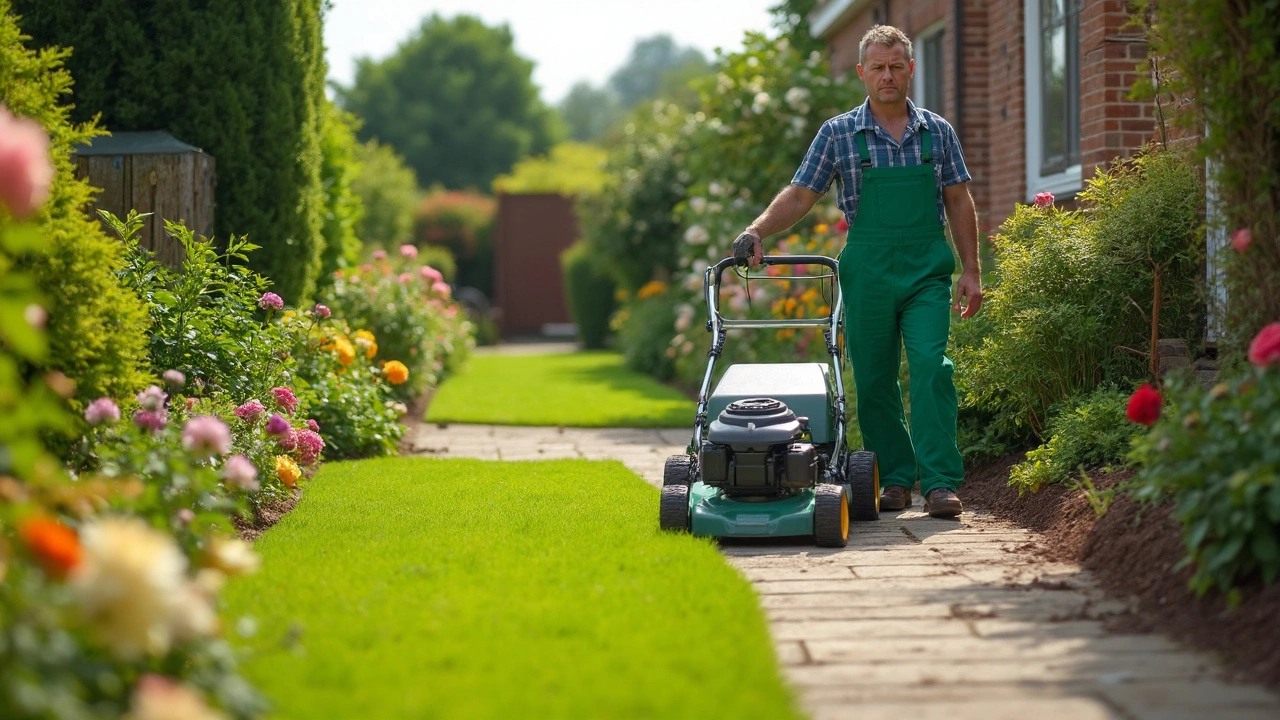Curious if you can safely put garden furniture on grass? Get practical advice, pros and cons, material tips, and tricks to protect your lawn and furniture.
Lawn Care Tips for a Greener, Healthier Yard
If you want a lawn that looks good without spending hours on it, start with the basics. Good grass grows when the soil, water, and mowing are in balance. Below you’ll find straight‑forward steps you can follow each week and each season.
Mowing and Watering Basics
The first rule is to cut the grass at the right height. Most common lawns do best when you leave about 2‑3 inches of blade. Cutting too short stresses the roots and invites weeds. Sharpen your mower blades at the start of each mowing season – a clean cut reduces tearing and helps the grass recover faster.
Watering is the next big factor. Early morning, before the sun gets hot, is the best time. A deep soak once or twice a week is better than light daily sprinkling because it encourages roots to grow deeper. Aim for about one inch of water per week, adjusting for rain. If you have a sprinkler system, set the timer to match the weather forecast.
Seasonal Care and Weed Management
Spring is the perfect time to give the lawn a fresh start. Rake away any dead grass, then spread a thin layer of compost or topsoil to improve drainage. Apply a slow‑release fertiliser once the grass begins to grow – follow the package directions, but a handful per 1,000 square feet is a good rule of thumb.
Summer heat can stress the lawn, so watch for brown spots. Raise the mower height a bit and water more deeply if the ground feels hard. Avoid fertilising in the hottest months; it can burn the grass.
In autumn, focus on clean‑up. Remove fallen leaves before they smother the grass. A light fertiliser application now helps the lawn store nutrients for winter. If you have a cool‑season grass, a light overseeding can fill in thin areas.
Winter care is mostly about protection. Keep foot traffic to a minimum and avoid using salt on the edges, as it can damage the soil. When spring arrives, do a gentle aeration by poking small holes with a garden fork. This improves airflow and makes it easier for water and nutrients to reach the roots.
Weeds are the bane of any lawn. The simplest defence is a thick, healthy grass that shades the soil. Spot‑treat visible weeds with a targeted herbicide or pull them by hand when the soil is moist. For larger weed problems, a pre‑emergent herbicide applied in early spring can stop seeds from sprouting.
Stick to these core steps and you’ll notice a greener, tougher lawn with far less effort. Remember: consistency beats occasional over‑doing. Little weekly actions add up to a yard that looks great all year round.
Wondering what yard work actually covers? This article lays out the common tasks pros tackle, from mowing to mulching. Get to know which services you need, what each job involves, and how to keep your outdoor space looking sharp all year. You'll also pick up some smart tips to save effort and money. Whether you're hiring help or doing it yourself, you'll be ready.

